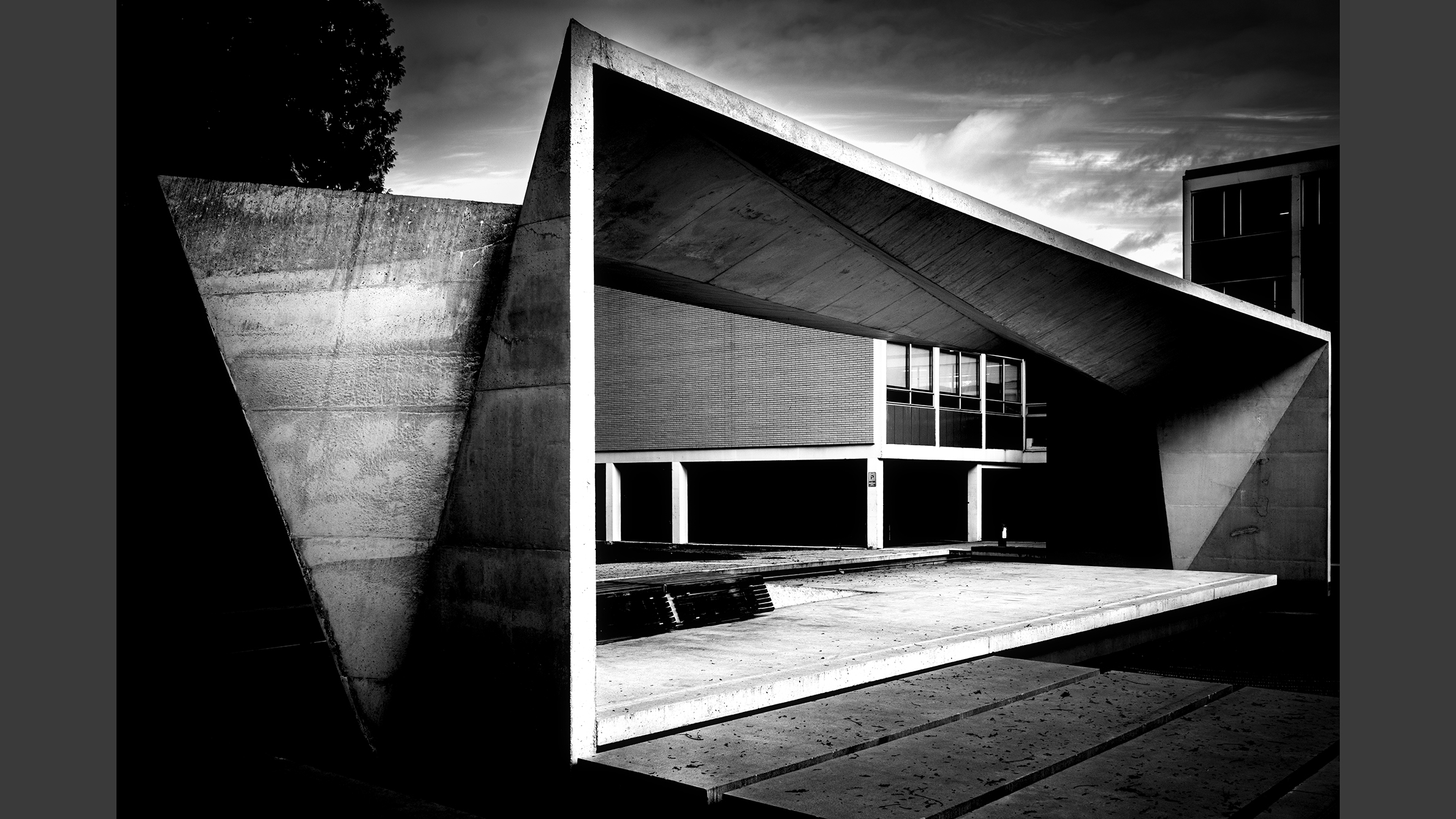Robert Irwin: using his Canon camera for the cause of the wild
Following in the footsteps of his famous late father, Steve Irwin, Robert pursues his passion for wildlife conservation via photography and his work at Australia Zoo
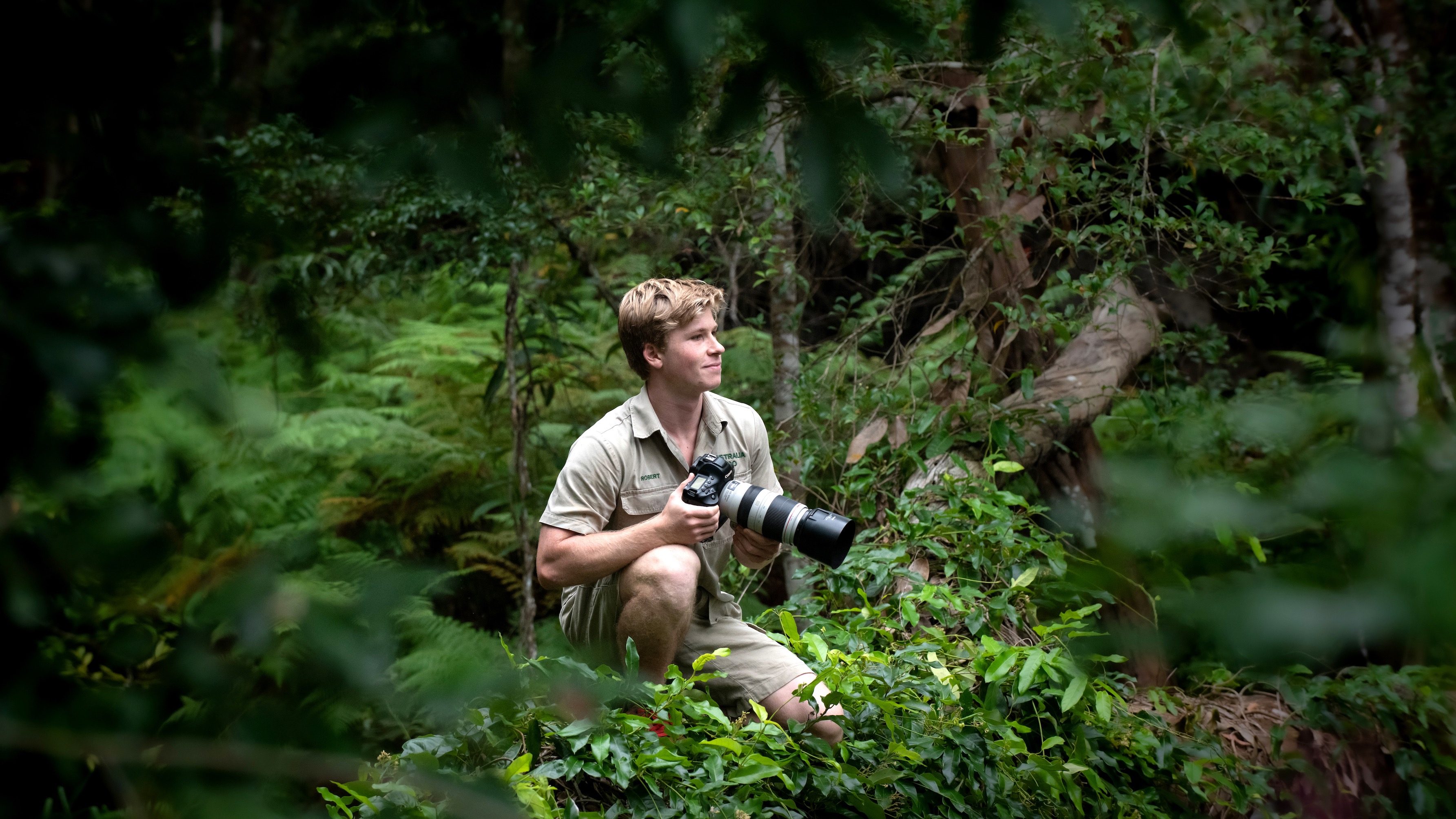
There will be few who don’t remember the shocking news of the sudden death in 2006 of the larger-than-life Australian wildlife expert, conservationist, environmentalist, and TV presenter, Steve Irwin. The good news is that his life’s work in animal conservation has been carried on by his son 17-year-old son Robert and the Irwin family at the Australia Zoo. Located on Queensland’s Sunshine Coast, Australia Zoo was established with the objective of becoming the best wildlife conservation facility in the world.
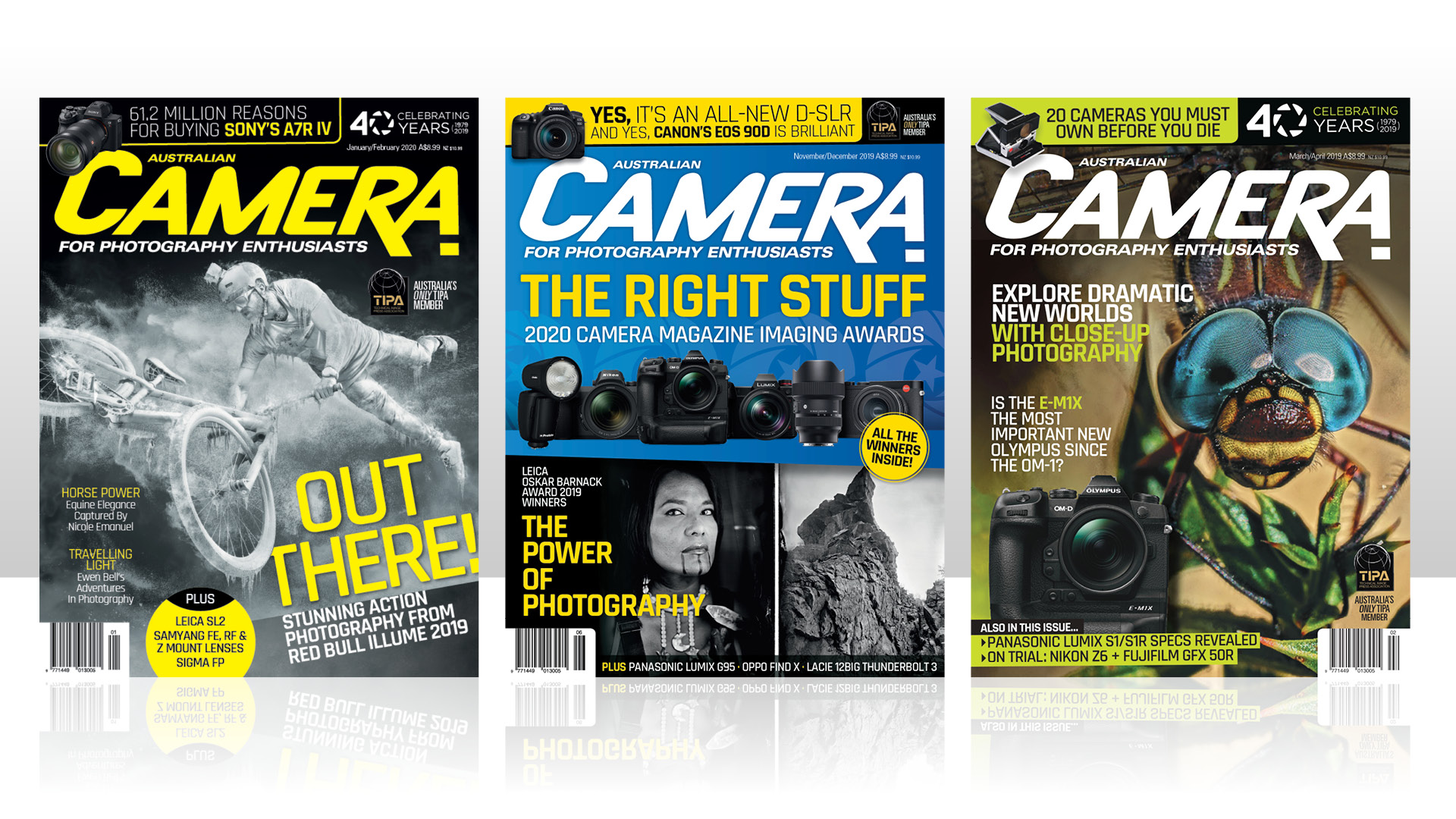
This article originally appeared in Australian Camera magazine, one of Digital Camera World's sister titles Down Under. Click here to find out more about Australian Camera magazine, including how you can subscribe to the print issues or buy digital editions.
When he isn’t involved in the zoo’s many activities – it occupies over 700 acres – Robert Irwin is in pursuit of wildlife armed with his cameras. The winner of the People’s Choice Award in the 2021 Wildlife Photographer Of The Year competition, Robert has become an accomplished photographer and, while yet to hit 20 years of age, already has a lot of experience shooting all over the world.
“I first started photographing on a little point-and-shoot when I was six years old, but after I got my first Canon DSLR, an EOS 700D, at age 10 and discovered the artistic opportunities that photography afforded, my passion quickly grew. And the rest is history!”
Robert was exposed (no pun intended) to wildlife from an even earlier age. His father caused some controversy when he carried him – then aged just one month – into a crocodile enclosure and proceeded to hand-feed the reptiles, babe in arms! Today, Robert says crocodiles are his favourite animals and he’s closely involved in Australia Zoo’s research into their biology and behaviour. He contends that a good knowledge of a subject is an essential part of being a successful wildlife photographer.
“In the world of wildlife photography, understanding the behaviour of your subject is crucial. It means you can put yourself in the best position to get the photo, and you’ll know – at least to a certain extent – how your subject will react. And while I certainly wouldn’t recommend everyone does this, I often find myself photographing up close with everything from crocs to venomous snakes… so being able to read the body language of potentially dangerous animals means I can push the envelope and capture a really unique perspective.”
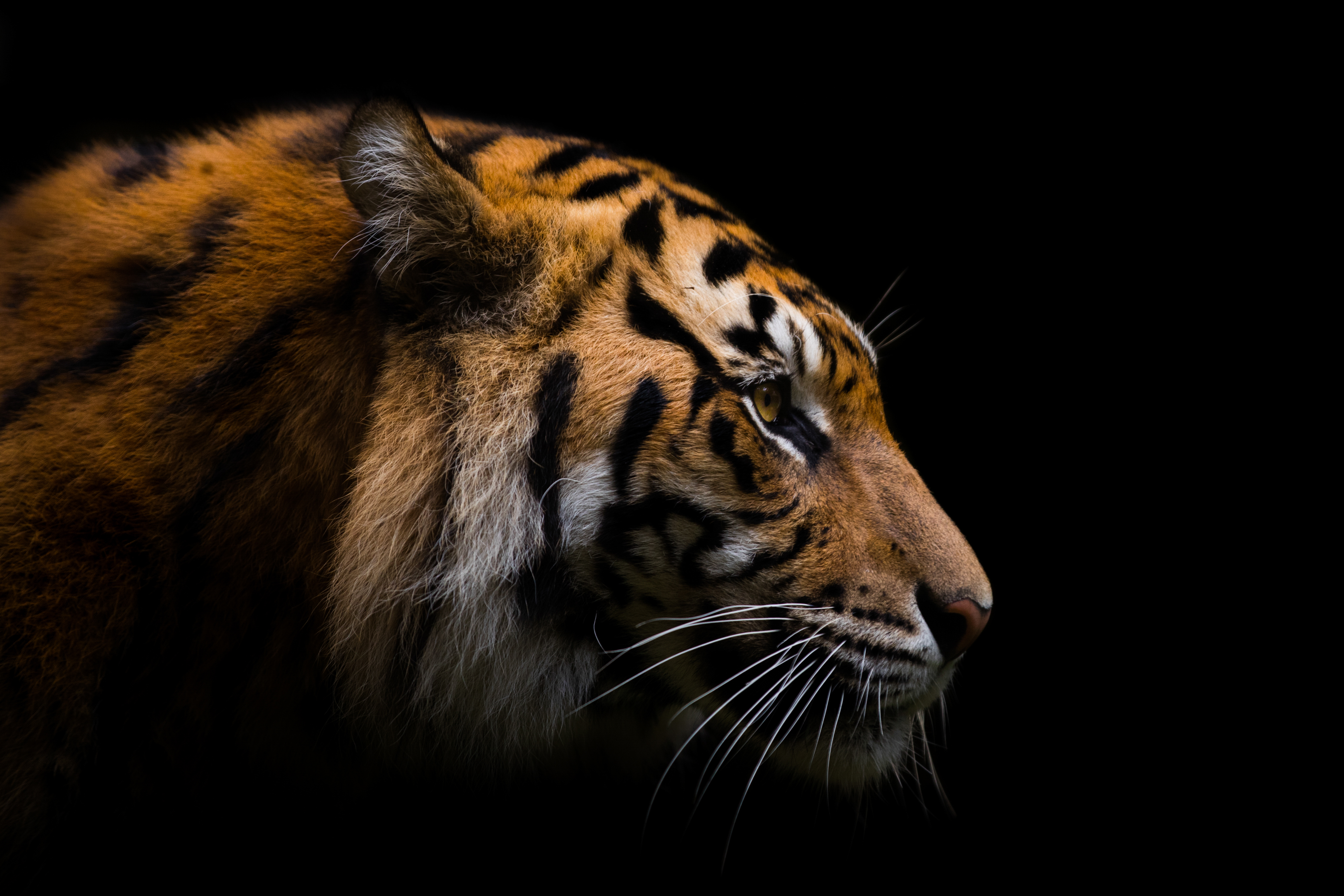
In addition to being well-informed about your subjects, Robert says that another very important attribute of a wildlife photographer is having plenty of patience.
“Sometimes it can be a long haul waiting for a particular animal. I’ve spent countless hours in tree hides or camouflaged in bushes – it can be tedious at times, but so worth it when you get the shot. On the other hand, it’s also vital to have the ability to adapt and be ready for when the action happens.”
Get the Digital Camera World Newsletter
The best camera deals, reviews, product advice, and unmissable photography news, direct to your inbox!
Rugged reliability
Obviously too, having the right equipment is also key to nailing great wildlife photos, and for Robert it all starts by having a tough and reliable camera body.
“Since the beginning I have shot Canon. The camera body that is almost always in my bag is my EOS-1DX Mark II. The thing I love the most about it is that no matter how tough the going gets, I know that it will always be up to the task. There is a feeling of rugged reliability that you can only get from an EOS-1DX Mark II. I have also recently started shooting on film with a Leica rangefinder camera.”
Robert isn’t the only wildlife photographer still very much committed to the DSLR and the advantages of the optical viewfinder, but he admits he’s been taking a peek at what’s happening with mirrorless cameras.
“It’s a tough question for many photographers, I think. I am quite amazed by the mirrorless space; it’s rapidly evolving and seems to excel leaps and bounds each year. I was lucky enough to shoot with a Canon EOS R5 mirrorless camera on a trip to outback Australia. I put it through its paces and was so impressed with just how versatile it was. High frame rates, fast autofocus, great low-light capability and a high megapixel count really makes it a jack-of-all-trades, and felt like shooting with the Ferrari of cameras.
“For me personally though, at this point I would not make the switch from DSLR – mostly because all of my lenses are strictly Canon EF lenses and I feel if one is to switch to a mirrorless camera, mirrorless lenses will really allow the camera to reach its full potential. Plus, call me old-fashioned, but there is just something about the feeling of picking up the metal alloy tank that is the EOS 1D. That being said though, on a big hike with a full camera bag I would probably opt for the lighter mirrorless option!”
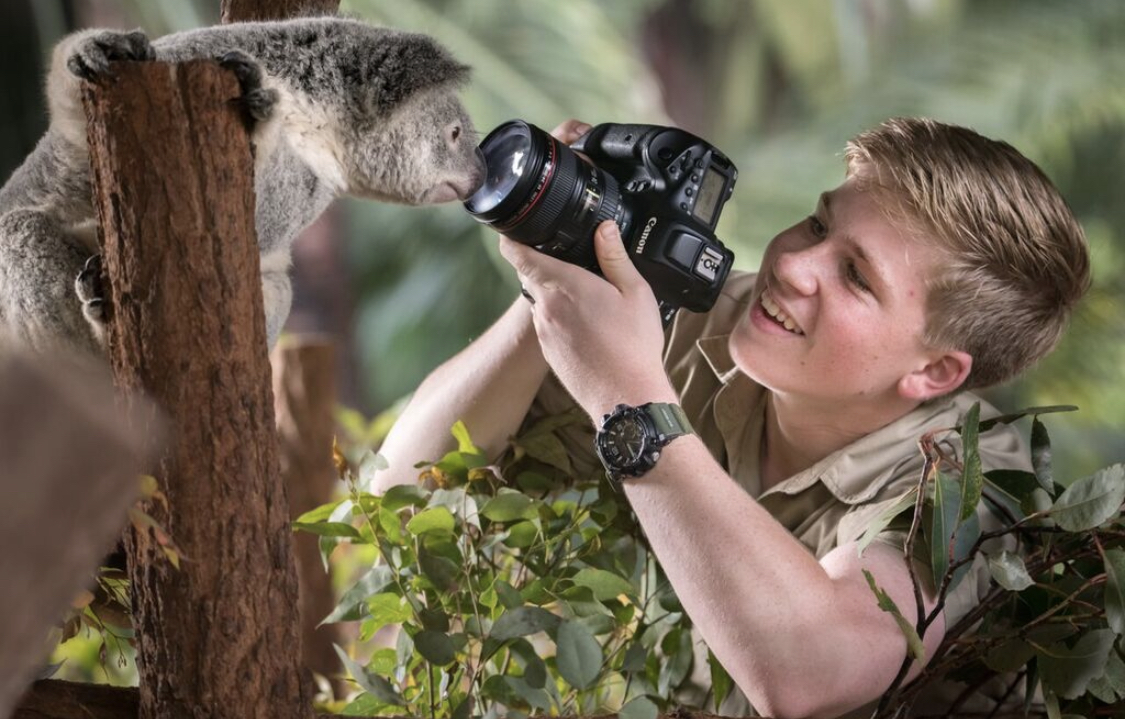
Long and short
When it comes to lenses, not surprisingly, Robert Irwin contends that a long telephoto is the must-have item in a wildlife photographer’s camera bag, but he also uses wide-angles a lot, even a fish-eye.
“I think that, for wildlife photography, having a long reach option is essential. The Canon EF 500mm f/4.0L is my go-to for those elusive, flighty subjects. It gives me an awesome reach, still with the ability to hand-hold. However, a great many of my favourite shots were actually taken with wide-angles. For the animals that let me get nice and close, I love my 16-35mm and 8-15mm fish-eye – these are also the lenses that I take underwater. Close focus distance, compact but tough, and beautiful image results; they have survived many close calls!”
And there’s a whole new world of wildlife to explore with the macro lens.
“Macro photography is a field that I have experimented with for a while and it’s so rewarding. Using macro lenses to magnify tiny subjects makes you feel like you’re entering an alien world, experiencing life on a completely different level. It certainly requires a great deal of patience and practise, not only to set up the right lighting and keep your subject in a very tight frame, but also to find the subjects themselves. I’ve spent countless hours searching for spiders and insects – it becomes quite fun though when you start seeing new species. Macro wildlife photography is also something you can do anywhere in the world. I think invertebrates are probably the most adaptable creatures on Earth, found in virtually every backyard.”
The photograph that won Robert the People’s Choice Award in this year’s Wildlife Photographer Of The Year competition was taken with a camera drone positioned over a bushfire front, and he contends that these devices have revolutionised wildlife photography.
“Drones open up so many opportunities for nature photography. I remember hearing so many stories of when my mum and dad were doing documentary shoots back in the day and all the logistical challenges of aerial filming – jumping in and out of helicopters. Nowadays you can easily get amazing quality from the smallest cameras on drones that fit in the palm of your hand. For me, it has totally changed the game for landscape and nature photography. There is no doubt that it also comes with its risks however and, at the end of the day, it is so important to never ever negatively disrupt an animal to get a photo.”
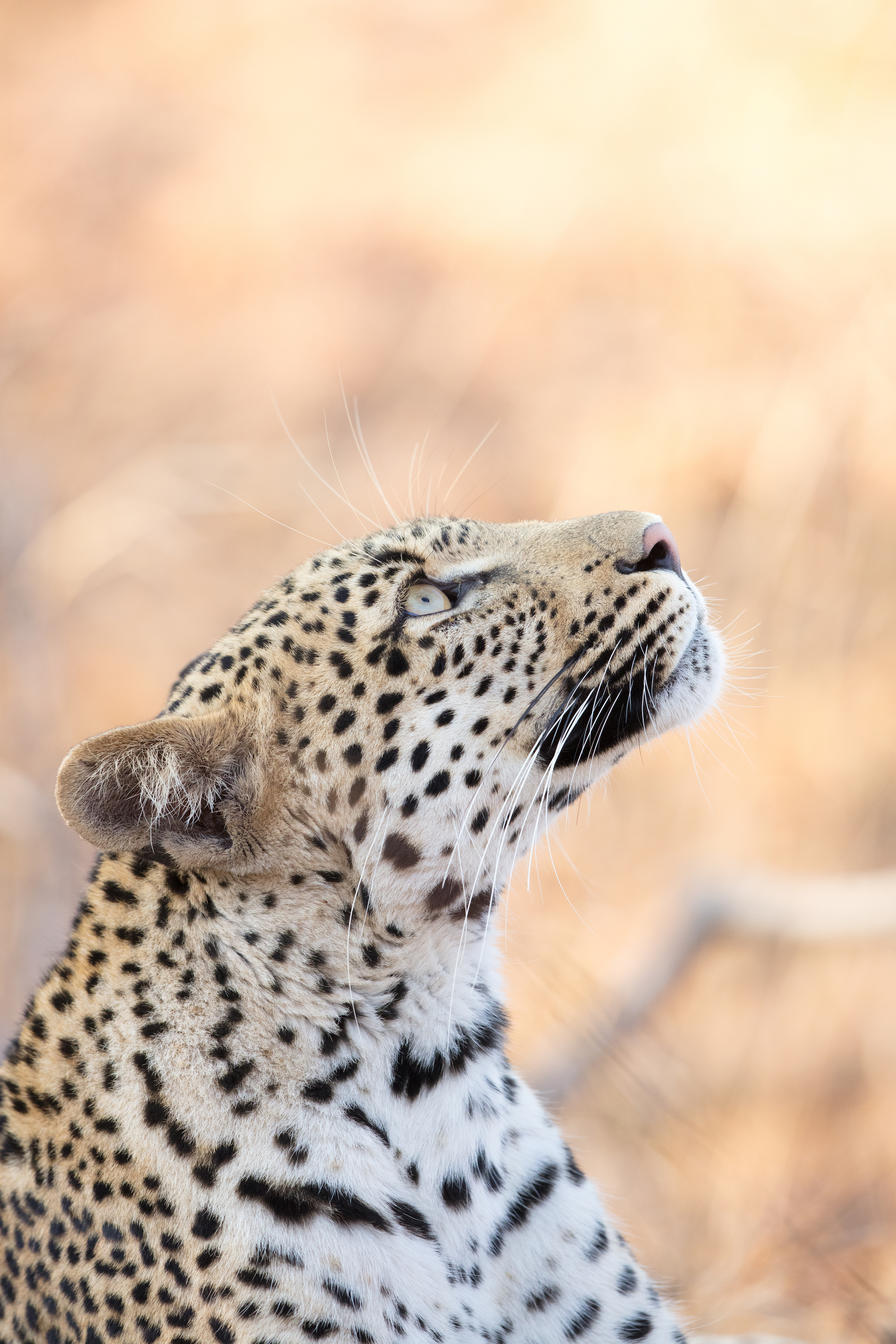
Raw beauty
Post-camera editing and retouching is now rampant in many areas of photography, but the debate is whether this is acceptable in wildlife photography or should it, like press photography, be entirely truthful and representative of the subject and situation as you found it… and saw it in-camera?
Robert Irwin comments, “For me, I am all about capturing the raw beauty of nature. I take a lot of pride in a very minimalistic editing style, aiming to capture most everything organically in the camera without need for too much alteration on the computer. I’m certainly not against editing, I think it is a remarkable art in itself, but for the most part, I personally try to achieve a style that portrays a very real, authentic view of wildlife. I also really strive to share the more playful, curious and non-threatening side to animals that have gained a bad reputation… such as reptiles”.
There’s now a long tradition of wildlife video-making and photography being used to help publicise conservation and environmental issues, and Robert is keen to do his part through his photography.
“With the world reaching an environmental tipping point and so many animal species facing extinction, I would hope that my images can spark a sense of wonder for our beautiful planet Earth and showcase what we have to fight to protect. My dad used to say, ‘People want to save the things that they love’ so, if beautiful imagery can make people appreciate and connect with the subject, then they will hopefully be more inspired to want to protect it. Photography is an amazing way to create positive change for our planet.”
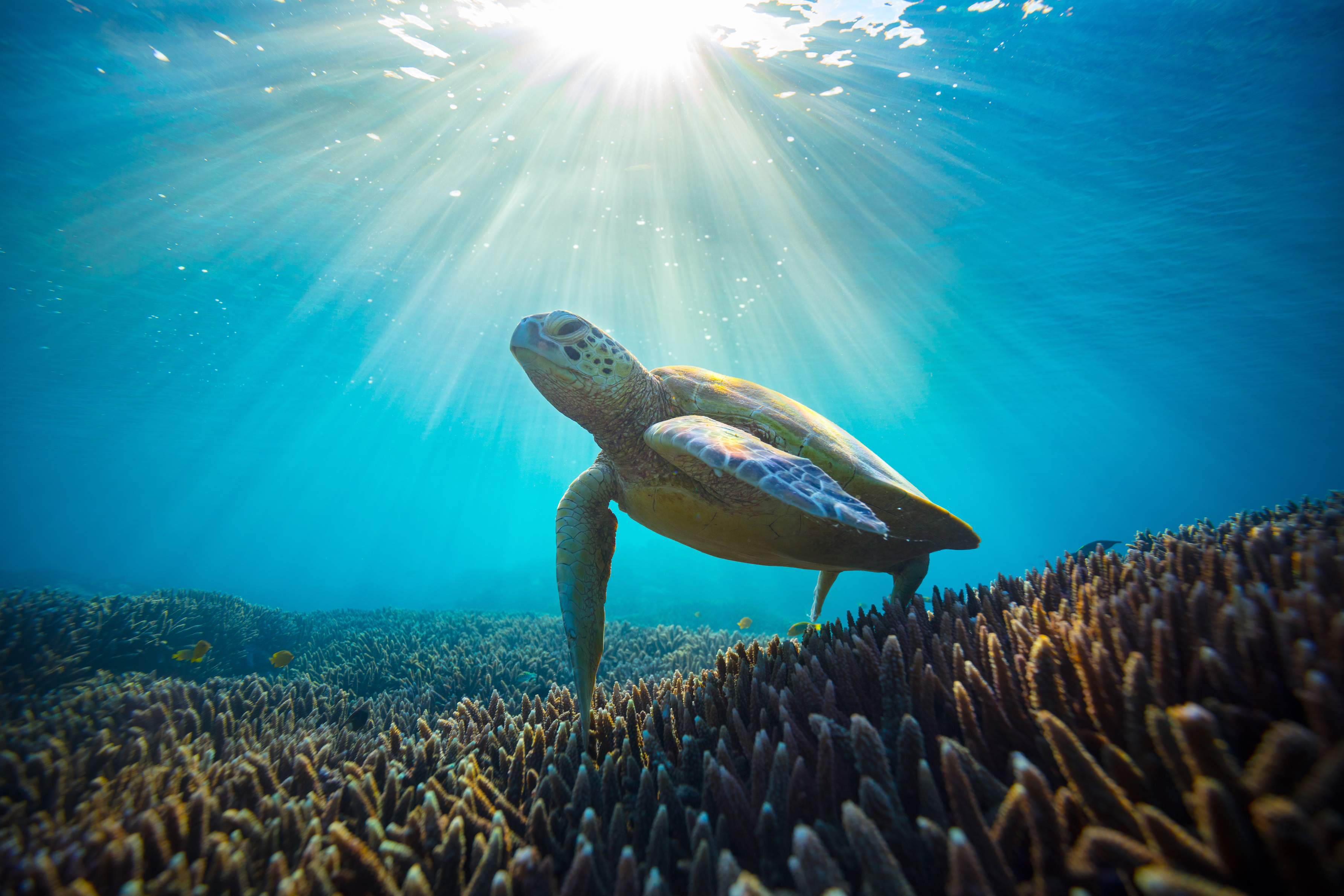
Hard yards
Wildlife photography presents many challenges, including the need to deal with many locational issues, particularly the weather conditions, and the fact that many animals are only active when the available lighting is minimal such as at dusk or dawn. These are more reasons why you need to be really motivated to get involved in wildlife photography.
“I feel very lucky to have found my mission and purpose in life quite early,” he states, “and my passion for wildlife conservation drives me every day. If I’m out in the field on a trip, I’ll always try to be up at first light for the best shots no matter the conditions. You have to be willing to put in the hard yards for the best results – plus the harsher the conditions, the more memorable the trip!”
For Robert Irwin, much of the inspiration for his wildlife photography has come from his parents and upbringing, but there have been other influences too.
“When you grow up in the middle of a zoo, it is hard not to love wildlife! I have always had a deep appreciation for animals and my dad definitely sparked my love for the natural world. And something that many people may not know is that my dad was also a very keen and talented photographer. Looking through the archives of some of his work behind the camera really inspires me.
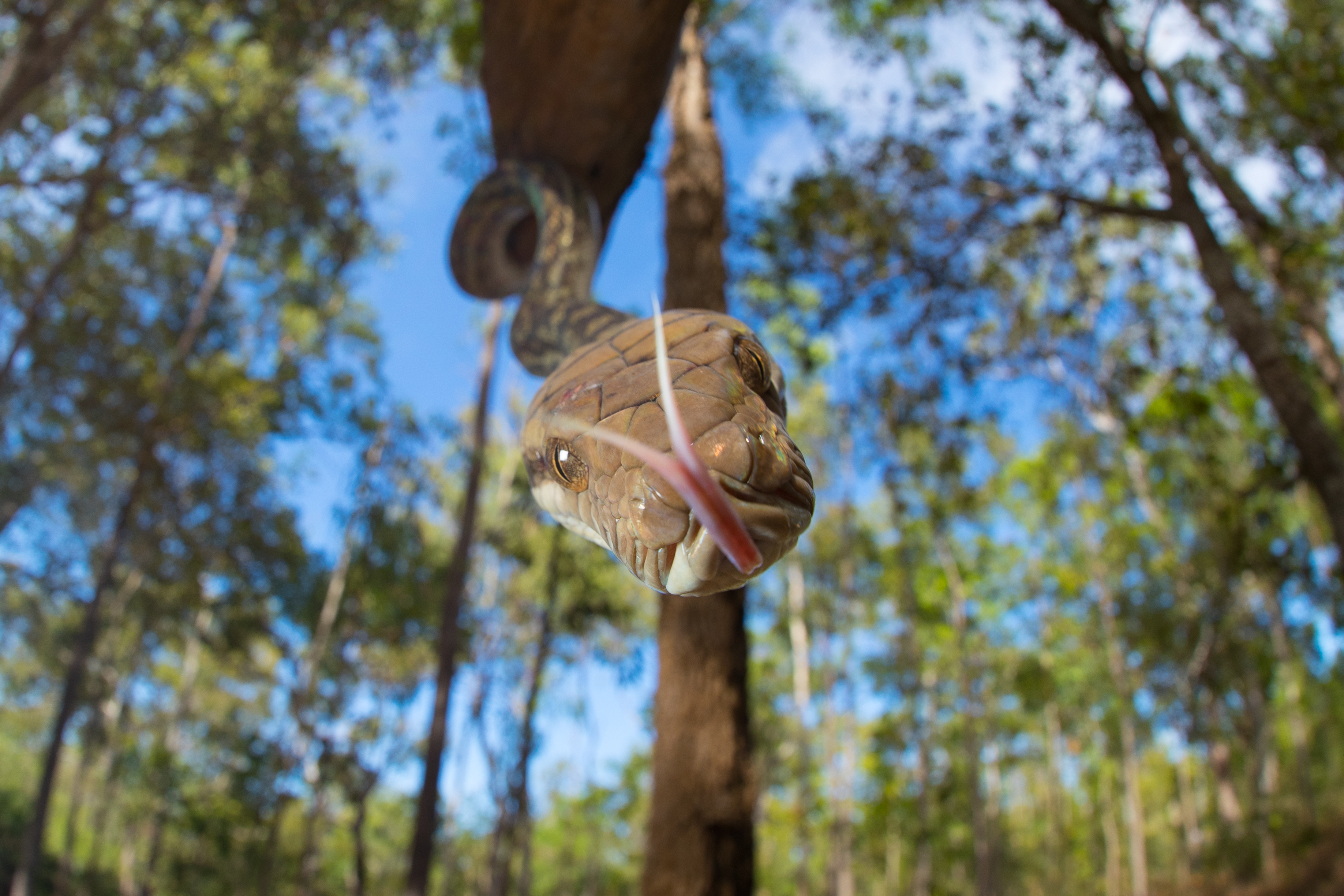
“My style of photography has developed and evolved a lot over time. The beauty of photography is that it’s so individual and everyone has a different perspective on the natural world. I’ve found that I really enjoy showing a very up-close and personal look into the animals that we share the world with. So, rather than looking at a subject far in the distance, I want the audience to be one-on-one with it and feel a real connection to it. There are so many incredible photographers that I really look up to and am inspired by – Russell Shakespeare, Paul Nicklen, Christina Mittermeier, Georgina Steytler and many more. There are also a lot of amazing young wildlife photographers that really inspire me; Isaac Spots, Harman Singh Heer and Ashleigh Scully just to name a few. It’s awesome to see other young people leading the charge as the next generation of photography.”
While picturing wildlife is his main interest, Robert is enthusiastic about photography in general and believes that, regardless of the subject matter, there’s a key ingredient to creating great images.
“I think it’s exciting to see more people than ever before entering the field of photography. If I could offer one piece of advice to those who want to enter this field, it would be to follow your passion and photograph what makes you happy. That might be wildlife, people, architecture, fashion, sport, landscape or all of the above! There are no limits in photography, and it’s really special when you can discover your own unique way of capturing the world around you. Be patient, find your style and don’t be afraid to take the opportunities that come your way.”
Robert Irwin's five top tips for wildlife photography
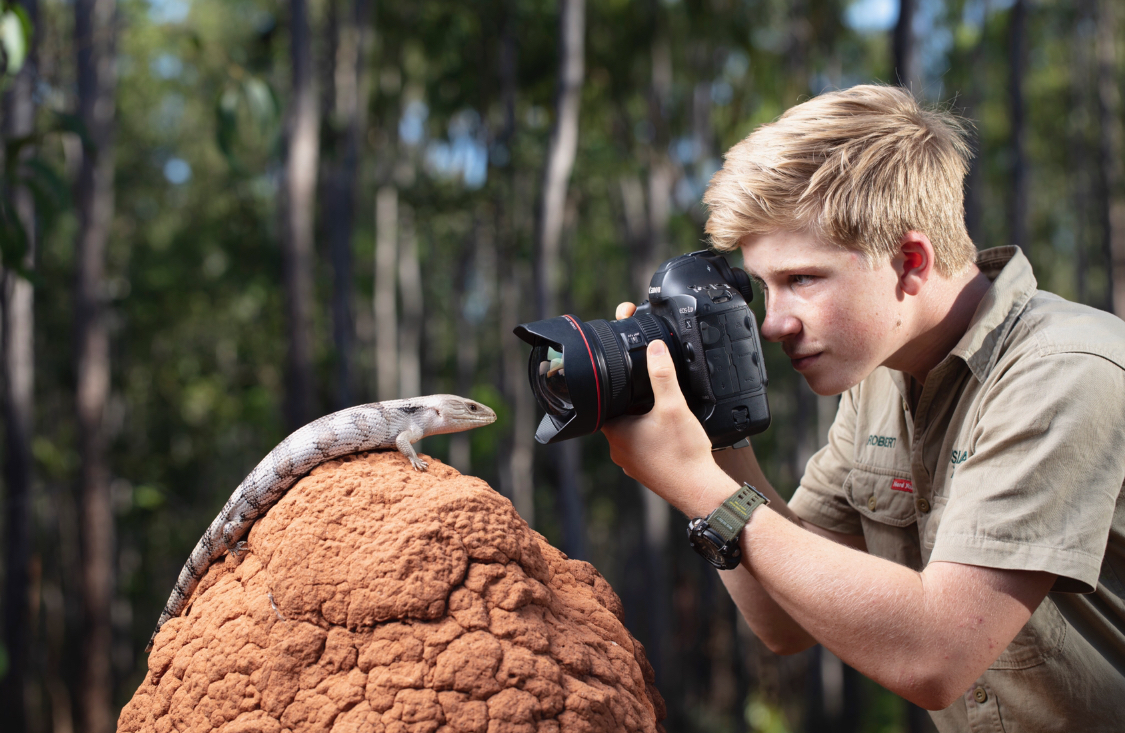
1. Learn and understand the animal you want to photograph before you try to track it down in the wild.
Understanding the behaviour of an animal first will get you much closer to the action.
2. You really need to be patient if you want a great shot.
Capturing an animal in its natural habitat isn’t easy, so I’ve often found that hiding nearby, watching and waiting for the right moment is a great strategy.
3. Always be ready for the shot.
Sometimes the action happens so quickly and you have to throw point number two out the window! I find that if I’m out photographing in varied lighting conditions, I set my shutter speed high and keep ISO on auto. I had one experience where I watched a pride of lions bring down an impala; it unfolded so quickly that I had no time to think about settings but, luckily, I had everything already set and ready to go. Sometimes you can forfeit manual controls and rely somewhat on your camera’s auto features until you have secured the frame. Then you can think about settings. Whatever you do, don’t miss that first image – it’s often gold!
4. Think about what story you want to tell. Rather than just taking a photo of an animal, try to consider the environment it is in. If there are any conservation stories, you can illustrate or showcase particularly interesting behaviour.
5. Photograph everything. Don’t be afraid to capture lots of images, especially when you start out. Once you hone your skill you can be more selective, but when you first start your photography journey, photograph anything and everything you want to. The more time you spend photographing, the quicker you will progress and find your style. And even if it’s not a particularly rare animal, that doesn’t mean you can’t make it look amazing!
Read more:
Best camera for wildlife photography
Best lenses for bird and wildlife photography
Tips to capture local wildlife
Essential exposure techniques
10 steps to sharper images
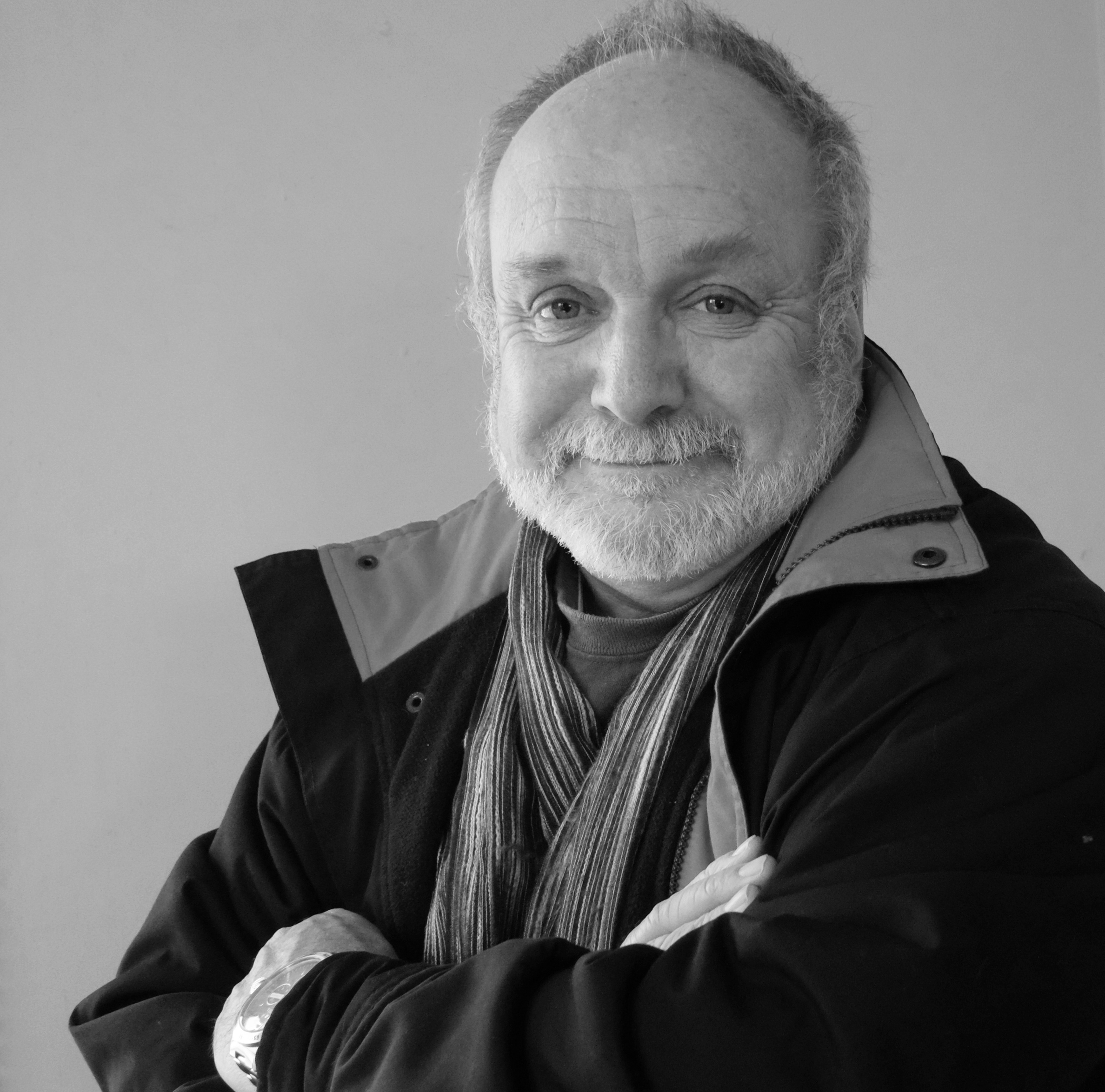
Paul has been writing about cameras, photography and photographers for 40 years. He joined Australian Camera as an editorial assistant in 1982, subsequently becoming the magazine’s technical editor, and has been editor since 1998. He is also the editor of sister publication ProPhoto, a position he has held since 1989. In 2011, Paul was made an Honorary Fellow of the Institute Of Australian Photography (AIPP) in recognition of his long-term contribution to the Australian photo industry. Outside of his magazine work, he is the editor of the Contemporary Photographers: Australia series of monographs which document the lives of Australia’s most important photographers.
